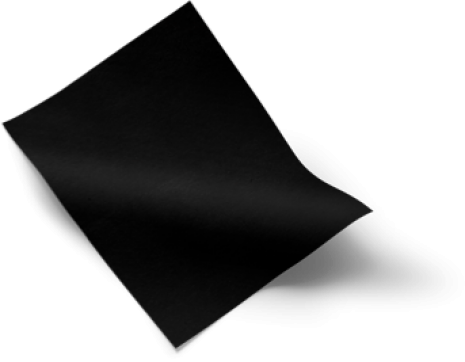Frequently asked questions
No, Finsulate film has to be applied by specialist trained installers. To ensure Finsulate’s warranty on the adhesion of the film, there needs to be proper surface preparation and the correct methodology is essential for a quality application.
If you send us the dimensions of the boat, the sailing region, and type of boat, we can make a tailor-made quotation including application.
Finsulate film is less vulnerable to damage than many antifouling paints. If, for example, a collision causes damage, it is easy to repair.
If the film is properly applied to the correct surface, the film will not come off the hull. That is why it is important a well trained professional applies Finsulate.
For yachts with displacing hulls, there is no proven loss of speed when using Finsulate.
|
Sustainablity
| Traditional antifouling paints contains biocides like copper and zinc. These metals end up in the water, which is harmful to the water. Traditional antifouling paint is applied to the underwater hull every year or every other year. The old layer is no longer effective and much of it disappears into our waterway |
Finsulate guarantees a 5-year operation. In practice, the film lasts longer. The first yachts with Finsulate have now been sailing for more than 7 years.
| Once the Finsulate film has been removed, it can now be put in the bin. However, in the future our ambition is to turn old Finsulate into new Finsulate film (‘cradle to cradle’) |
After 7 years we offer to arrange an inspection of the underwater hull. At that moment we can advise on condition and the likely time of replacement.
| No, Finsulate contains no biocides or other toxic substances. Finsulate is effective against fouling because of the physical structure of the film |
If the film is properly applied to the correct surface, the film will not come off the hull. That is why it is important a well trained professional applies Finsulate
Finsulate and sailing characteristics
|
Finsulate film is less vulnerable to damage than many antifouling paints. If, for example, a collision causes damage, it is easy to repair.
Yes, we applied several sailingboats with Finsulate which dry out. If a sharp object will damage the film, it will be easy to repair by yourself
There is no more sanding and painting – once Finsulate film is applied your no longer have these maintenance tasks. However, during or after the end of the sailing season, the underwaterhull should be cleaned (how many depends on sailing region, berth and the sailing time). Cleaning is far easier with Finsulate film as fouling can not bond properly to the vast surface area. This can be done simply in or out the water.
It depends on the sailing region, berth and how often you will sail. In general the underwaterhull have to be cleaned twice or three times a year for salt water in North Europe (maximum). On the other hand, there are also places where cleaning the underwater is not necessary at all. Please, ask us for advise for your specific region. For boats sailing on (mainly) fresh water, it will be sufficient to clean the boat once a year with a highpressure cleaner (max 200 bar)
| This can easily be done by a highpressure cleaner (max 200 bar) or spatula. |
At the end of Finsulate’s useful life, the film can be removed by hot water/steam. Often a wallpaper steamer is used
| This can easily be done by a highpressure cleaner (max 200 bar) or spatula. |
Preparation
No, the old antifouling paint layers will have to be removed to ensure long term adhesion of Finsulate film.
No, but we would like to refer you to our partners who can do this.
|
Yes, Finsulate film can be applied to all surfaces. It is important that the boat is clean and there is no old antifouling paint. In most scenarios it is not necessary to remove the current primer/epoxy layer. If the antifouling layers are removed, we advise to apply 1 fresh layer of epoxy primer. Some wooden ships need direct contact with the water to stay waterproof. With these ships we do an evaluation in advance about the suitability for Finsulate.
Yes, Finsulate film can be applied to all surfaces. For aluminum vessels, another advantage is that Finsulate doesn’t contain copper (most of the traditional antifouling paints contains copper what could cause a galvanic effect).
Yes, Finsulate film can be applied to all surfaces.
| Yes, Finsulate film can be applied to all surfaces. |
Most epoxy primers are suitable for Finsulate. If you have any questions about the epoxy, you can contact us
The preparations on new boats are the same as the preparation ahead of applying antifouling paint, but instead of paint, apply Finsulate as a quality, long term, environmentally friendly alternative.
Sales process
You can send an email to sales@finsulate.com or push the button “price request” on this site. To give a good price indication, we need to know the berth, measurements of the boat and kind of ship (motor or sailboat). In 48 hrs you will receive an offer or we forward the enquiry to our local distibutor (Finsulate UK for customers from United Kingdom)
| It is depends on the boat. As an indication: 20m2 could be done in c. 1 labour day |
If you send us the dimensions of the boat, the sailing region and type of boat, we can make a tailor-made quotation including application.
Finsulate collobarate with several yards. And we are open to work together with every yard. Please send us an email to discuss the possibilities
Yes, Finsulate can also be installed on location.
| Yes we can deliver abroad via our in country partner. |
No, Finsulate can only be applied by certified wrappers. To guarantee 5 years, it is essential to apply Finsulate in the right way.



